REFORESTATION
“The creation of a thousand forests is in one acorn.” – Ralph Waldo Emerson, American Poet
Mission
Reforest areas of degraded agricultural land and nurture those areas back to a climax forest composition.
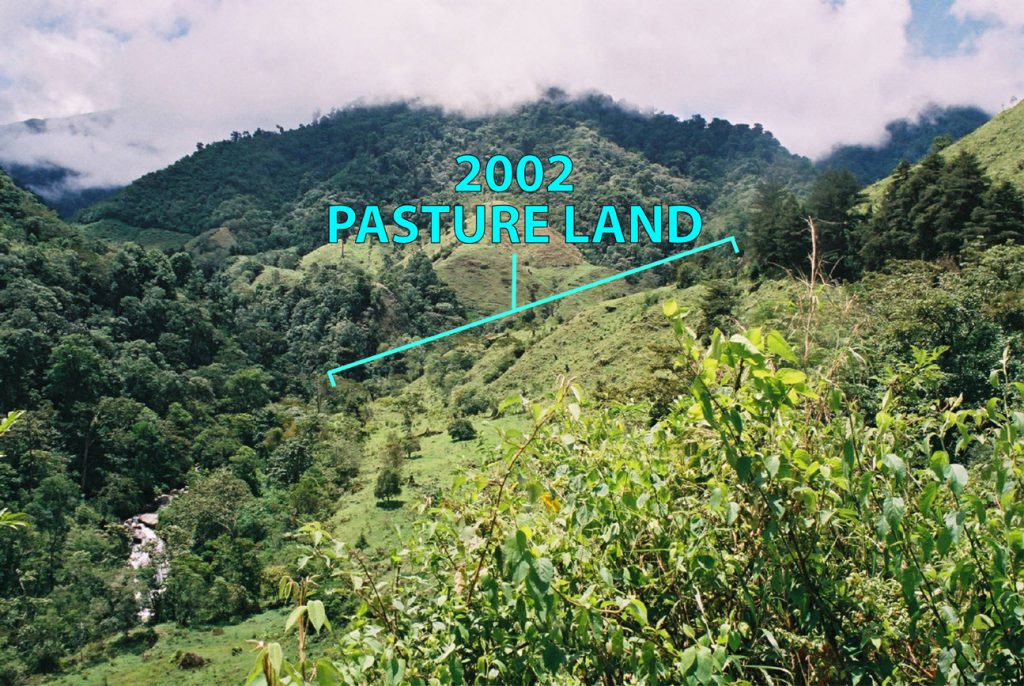
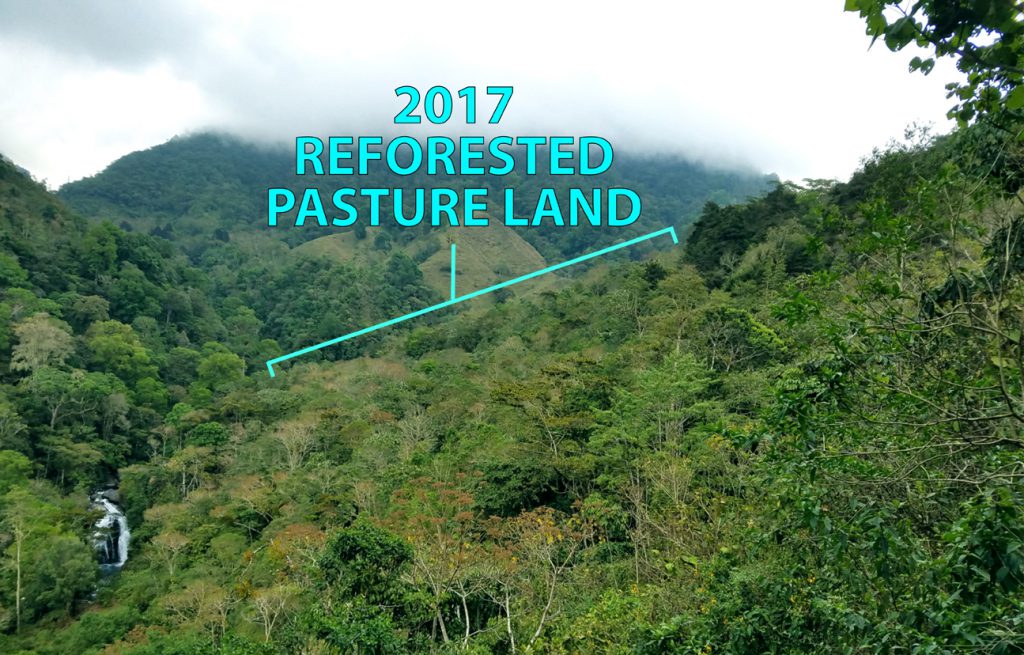
How It’s Done
Cloudbridge began its reforestation efforts in 2002 with both local and international consultants, eventually coming up with a plan to reforest degraded agricultural land. Research helped to identify trees and other flora that are native to the oak-dominated lower montane cloud forest of the Talamanca Range. Initially entire hillsides were planted and efforts to maintain the seedlings could not compete with the invasive grasses. Over the years, with the invaluable help of our local workers, volunteers and researchers, our planting techniques have evolved to be much more successful.
At the beginning of the project, a few tree species were selected for a potential sustainable forestry demonstration. These included the non-native (but common in the area) Cupressus lusitanica (cypress, cipres) and the native Alnus acuminata (alder, jaúl). Ultimately, sustainable forestry for commercial use failed to be a viable option due to a number of factors including access, terrain, low value of the trees, and disruption of the forest’s natural regeneration. The non-native cypress is slowly being weeded out and used on the reserve for building.
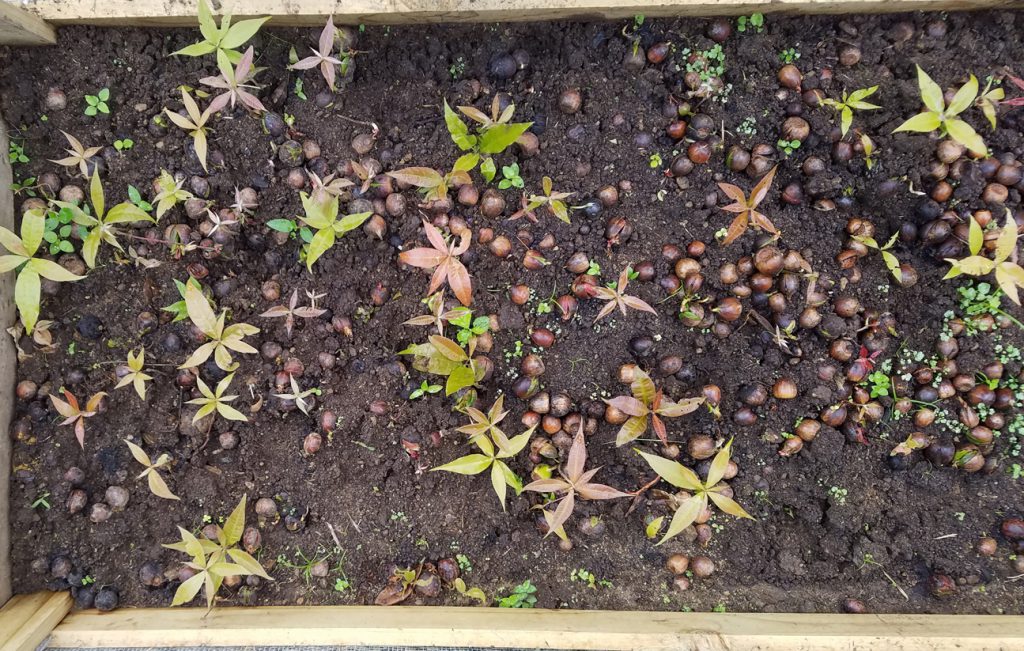
Today Cloudbridge plants less trees each year, but, by planting older seedlings and through aggressive maintenance, seedling survival is much higher. Rather than planting large hillsides, Cloudbridge focuses on planting the ridge lines. While ridges are less hospitable to the seedlings compared to the valleys, once established, they will spread their seeds down the slope, helping with natural regeneration. Many individuals of sun loving, fast growing species (such as Cecropia) are planted in old agricultural areas, along with a few individuals of climax species. After several years of growth, enough shade will be available to plant long-lived shade loving species (such as oaks, Quercus spp.) under the canopy, which will eventually take over from the fast growing species.
Cloudbridge gathers 12-16 seed species from both pioneer and climax species in the old growth forest. The seeds are then propagated in the tree nursery/vivero and grown for 6 months to 2 years in plastic bags. Tree seedlings are sometimes purchased from neighbors or removed from old growth forests on site to diversify our species. When it is time to plant, seedlings are boxed and carried by volunteers and staff to the planting area.
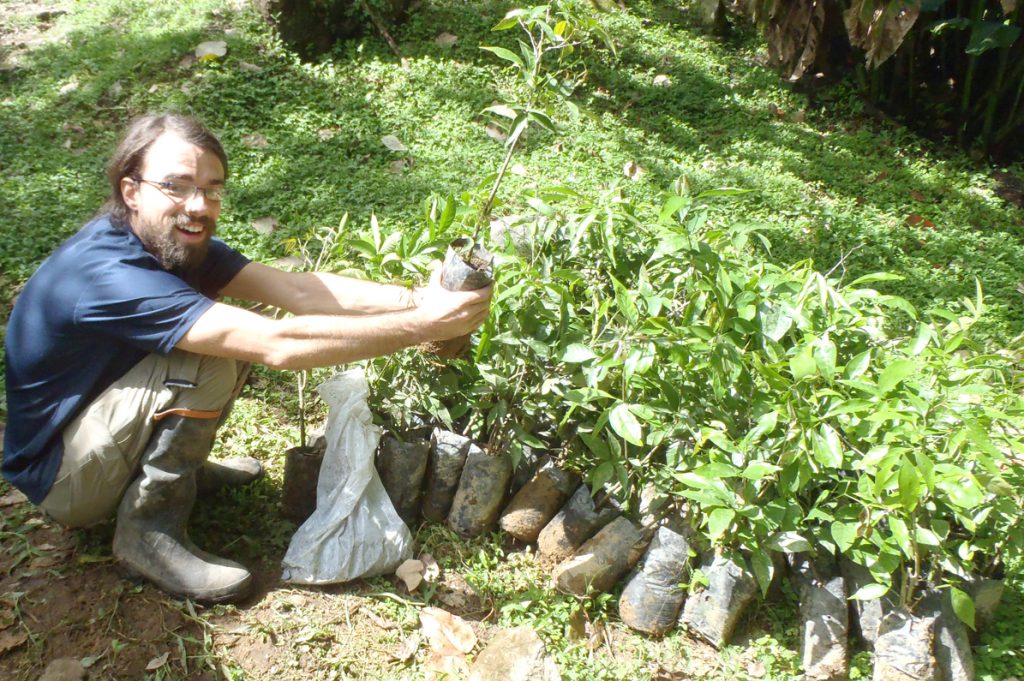
The planting area is typically cleared of all herbaceous materials (especially bracken fern) months in advance so it has had time to decompose and enrich the soil. Holes are then dug 2- 3 meters apart and the seedlings are planted. Because the soil was degraded after years of agriculture and there is often little topsoil, compost may be added to augment the soil and give seedlings an early boost. When planting is complete, seedlings are marked with a stake and mulched with cardboard to help hold in the moisture and prevent grasses from growing around the tree. New cardboard is added every 3-4 months for the first two years. Staff and volunteers clear invasive grasses each month during the rainy season.
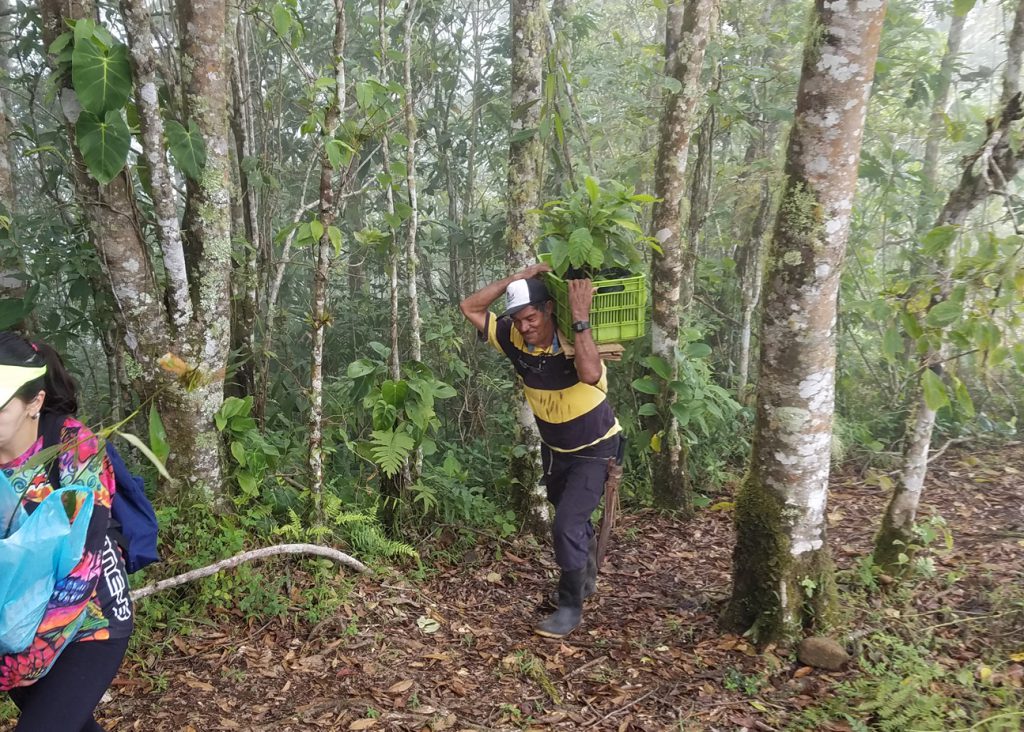
To mimic natural succession of forest growth and promote sustainable forest health, Cloudbridge has begun enhancement planting. Staff and volunteers assess and identify existing tree species in an emerging secondary forest in both planted and naturally regenerated areas. Areas under the shade of the canopy are then cleared of herbaceous and shrub layers so shade loving giants of the old growth can take root. This will help diversify tree stock, and increase the rate of succession helping our forests to climax as quickly as possible.
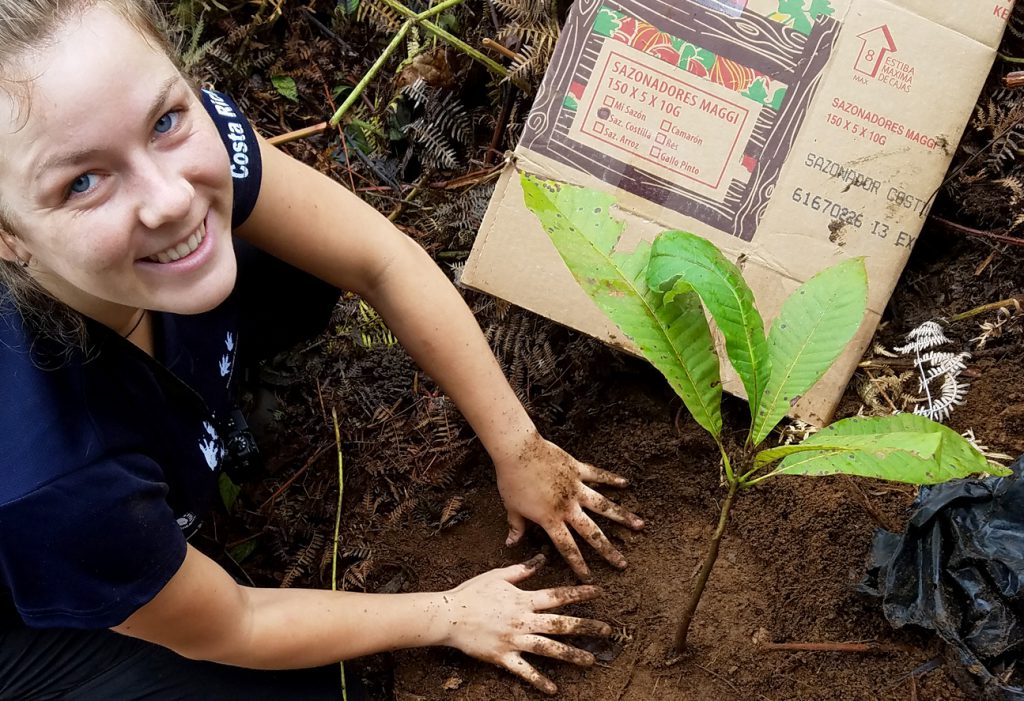
Established plantings not requiring monthly maintenance (after 4-5 years) are maintained on an annual or semi annual basis. Trees may be pruned to improve vertical growth and forest structure, smothering vines are removed, and invasive species are cut down.
In future studies, we hope to conduct a full assessment of understory plants in the old growth areas. This information provides valuable information about forest stratification, symbiotic flora and fauna relationships, and areas from which we can harvest seeds or seedlings to target- reforested areas.
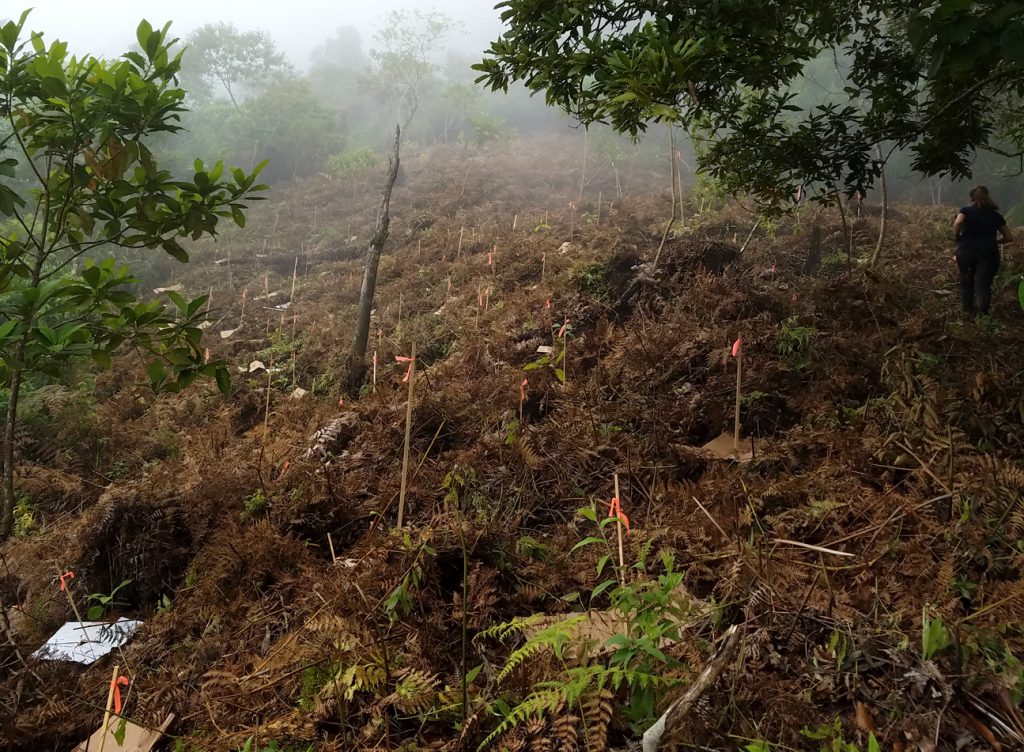
Reforestation Achievements (as of July 2023)
- First and foremost, since 2002, the forest is returning and with it, the native wildlife.
- Jaguars, tapirs, oncillas and other endangered mammals have returned and have been photographed.
- Over 300 species of birds have been documented within the reserve.
- Oaks planted in 2002 are now bearing acorns and spreading into new areas.
- Pioneer species are spreading naturally, opening new areas for enhancement planting.
- Participated in local tree plantings with seedlings provided by our vivero.
- Collected seedlings from ICE to increase species inventory
- The new forest has stabilized the soil, protecting the watershed from erosion.
- Our forest sequesters more carbon than the previous pastures.
- Soils are improving in structure and nutrient holding capacity.
Find Out More
To learn about becoming a reforestation volunteer, please visit our Volunteer/Research section. Read more about our reforestation studies and learn about what other organizations have been doing. To learn more about our education programs involving reforestation, please visit our Education section.
Questions? Email Tom Gode at tom.gode@cloudbridge.org.
Please visit our blog site for monthly updates and photos on our volunteers and researchers, their projects, and other activities at Cloudbridge Nature Reserve.
